This Is How to Prevent Heat Stroke
Heatstroke is a silent killer. Extreme heat poses a greater threat than hurricanes, floods, and tornadoes combined. In fact, excessive heat was the leading cause of weather-related deaths in the U.S. In 2023, a record 2,325 people died from heat-related issues in the United States alone. Since 1970, summers have warmed by an average of 2.6°F in 97% of the 242 U.S. cities analyzed. As climate change worsens, the frequency and intensity of hot days and heat waves are rising rapidly. The situation is even more alarming in Europe, which is warming at twice the global average and is the world’s fastest-warming continent.
Extreme heat contributes to a range of health conditions, including hospitalization, cardiovascular diseases, and death. Deaths due to heat-related illnesses in the U.S. have more than doubled over the last 25 years. The health impacts of heat are particularly adverse among older adults due to their decreased ability to adapt. A single episode of exertional heat stroke can lead to chronic health disorders and accelerated aging. The hazard of extreme heat is often overlooked because it lacks the visible drama of roofs being ripped from homes or streets being turned into rivers.
Extreme heat is no longer a rare occurrence; it has become the new normal. If you work outside or in hot environments such as steel mills, kitchens, bakeries, or unairconditioned offices, you are at risk.
Many hikers and athletes in sports like football, soccer, and rugby are also suffering from heat-related illnesses, including heat stroke. It is essential to recognize when temperatures become dangerous. Understanding how to prevent heat-related illnesses and treat heat stroke and heat exhaustion is crucial. In this post, we will provide important information on staying safe and managing heat exposure effectively.
Learn How to Stay Safe in the Heat!
HEAT ILLNESS PREVENTION: KEEP IT COOL
Keep yourself safe, reduce your company’s legal liability, and ensure everyone knows the signs and symptoms of heat exhaustion and heat stroke, as well as how to stay cool. It takes less than 30 minutes!
How Your Body Manages Heat and Prevents Heat Stroke
Your body maintains a core temperature of approximately 37 degrees Celsius (98.6 degrees Fahrenheit) at all times. The body gains heat by using the food you eat to produce energy and through radiation from the sun. If your body temperature rises too high, it can lead to heat exhaustion or heat stroke. Sweating is the primary way your body cools itself, but excessive humidity can hinder sweat evaporation, increasing the risk of overheating. Age, fitness level, underlying medical conditions, and individual heat tolerance influence your susceptibility to heat stress.
One of the primary ways the body cools itself is through the evaporation of sweat. When humidity is high, sweat cannot evaporate efficiently, leading to overheating. This is why the humidity level is crucial when discussing heat stress. The perceived temperature can be significantly higher in high humidity than what the thermometer reads.
Warning Signs and Symptoms of Heat Exhaustion Vs Heat Stroke
- Muscle cramps
- Heavy sweating
- Weakness or tiredness
- Dizziness
- Headache
- Confusion
- Fainting
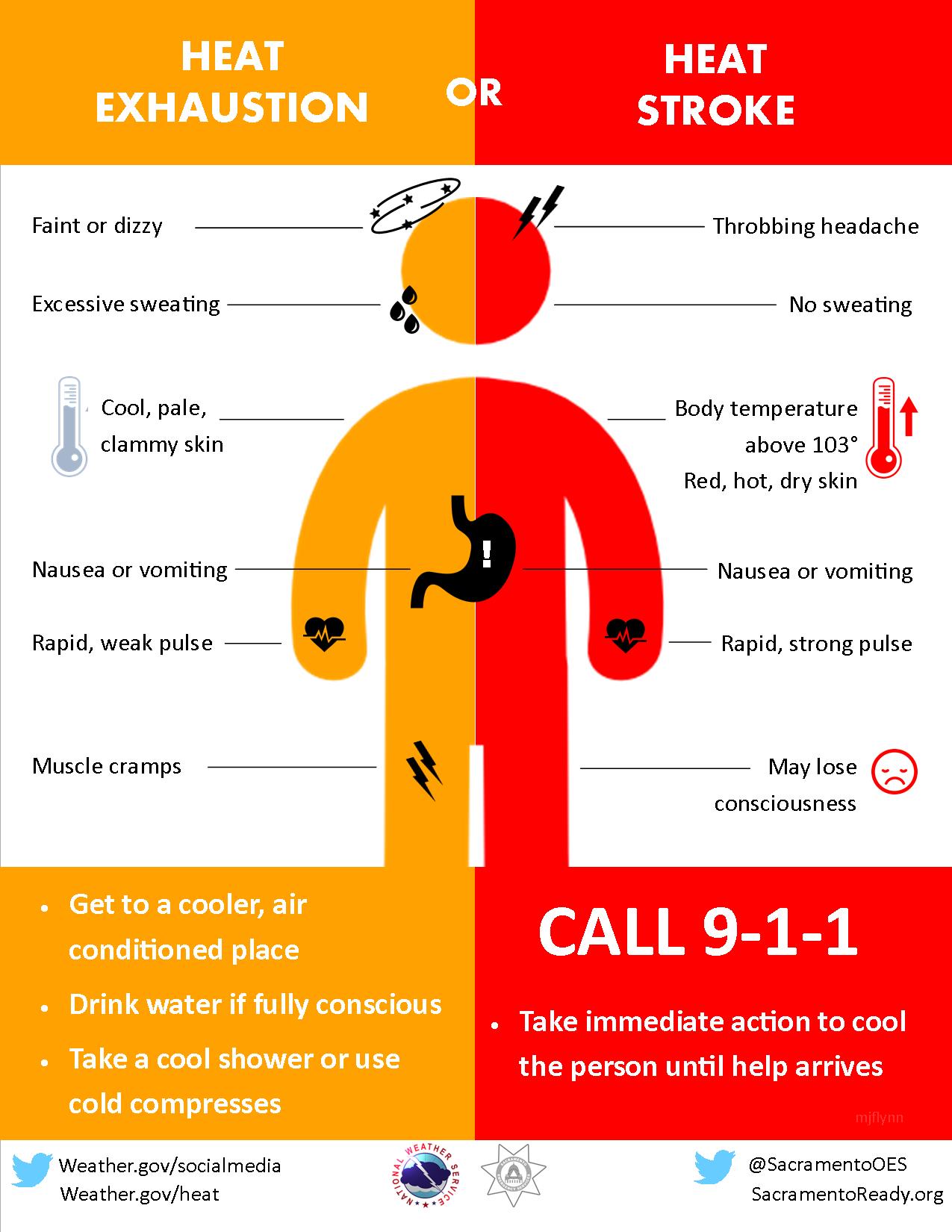
Exposure to heat and toxic chemicals simultaneously is exceptionally challenging for the body. Ensure you know how to work safely with toxic chemicals at your workplace by taking the Free WHMIS training or the Free Hazard Communication Standard Training.
Measuring Your Heat Risk
The American Industrial Hygiene Association has an upgraded phone app that uses cutting-edge science to provide heat-stroke prevention recommendations tailored to real-time weather conditions. The app is free.
A simple method to assess your heat risk is monitoring your heart rate. If your heart rate remains consistently above the value obtained by subtracting your age from 180 for several minutes, it indicates an increased risk of heat illness. Investing in a smartwatch that monitors heart rate can be beneficial.
If you work in the heat, consider investing in a smartwatch. Watches that measure your heart rate are readily available and inexpensive. Soon, your smartwatch will be able to tell you when you are at risk of heat stroke, but until then, keep it simple.
Take Frequent Breaks and Acclimate to Prevent Heat Stroke
You are most likely to experience heat stroke when exposed to a sudden increase in temperature, such as during an early-summer heat wave or travel to a hotter climate. Most occupational heat-related deaths occur in the first 1-3 days of working in the heat. Even if you recover from heat stroke, you may have long-term damage to your heart and nervous system.
It’s important to ease into working in a heatwave and allow your body time to acclimate to the conditions. Acclimatization, which can take several weeks, allows your body to adjust gradually and cope more effectively with the heat. Remember, taking it easy initially is crucial to your well-being.
Stay Hydrated to Prevent Heat Stroke and Heat Exhaustion
Staying hydrated is crucial for maintaining your health, especially when working in hot conditions. Aim to drink a cup of water (approximately 250 ml) every 15 minutes, which amounts to about one litre per hour. You will feel and perform much better if you drink water consistently throughout the day, rather than just during mealtimes or breaks. Remember to drink plenty of water before and after work as well, to ensure you are not dehydrated before starting your shift.
What Medicines and Drugs Increase the Risk of Heat Stroke?
Unfortunately, all medicines have some side effects. The following medications may affect your ability to work safely in the heat:
- Blood pressure pills
- Beta-blockers
- Antidepressants
- Aspirin and other over-the-counter pain relievers
If you work in the sun, antibiotics, antifungals, and acne medications can increase your sensitivity to sunlight, leading to severe sunburn.
Before working in the heat, consult your doctor or pharmacist about any medications you are taking.
Know Your Rights and the Regulations In Your Area
Different countries, states, and provinces have varying legal requirements regarding working in hot conditions. It is essential to familiarize yourself with the regulations that apply to your specific area. In the United States, Europe, and Canada, employers are generally required to take reasonable precautions to ensure their workers’ safety. Employees have the right to refuse unsafe work and should report any feelings of faintness, lightheadedness, coordination issues, or illness to their supervisor. Additionally, checking in on co-workers’ well-being is encouraged, as they may need assistance.
Guidelines and Regulations for Heat Exposure
Legislative requirements regarding work in the heat vary by Country, State, and Province. Some Jurisdictions have no maximum heat exposure limits beyond the legal obligation to keep workers safe; in contrast, California, Minnesota, Oregon, Washington, and British Columbia, Canada, have specific regulations. The province of Ontario is proposing a new stand-alone Heat Stress Regulation.
For example, California’s Heat Illness Prevention Standard for outdoor work requires employers to provide training, water, rest, shade, and planning. A temperature of 80°F triggers the requirements. At 95°F, more stringent requirements kick in. For indoor workplaces, the regulation will apply when the temperature reaches 82°F. This Standard has resulted in work-related injuries on hot days declining by 15–17% in construction, 24–27% in agriculture, and 19–25% in transportation.
In Oregon, the Heat Illness Prevention Standard applies at a heat Index of 80°F. More rigorous requirements kick in at a heat index of 90°F.
“The Heat Index sometimes referred to as the apparent temperature or “feels like,” is given in degrees Fahrenheit and is a measure of how hot it really feels when relative humidity is factored in with the actual air temperature.”
The National Weather Service
The National Weather Service uses a heat index (HI) to classify environmental heat into four categories: Caution (80°F – 90°F HI), Extreme Caution (91°F – 103°F HI), Danger (103°F – 124°F HI), and Extreme Danger (126°F or higher HI).
Although it is not used in any regulations for heat exposure, you may also see the “Feels Like” temperature on the News or your Weather app. “Feels Like” temperature accounts for humidity and wind speed (but not direct sunlight) to adjust the actual temperature and help us understand how it feels outside. It’s a way to express the overall temperature sensation you experience on your skin when you step out.
The Wet Bulb Globe Temperature (WBGT) is considered a more accurate indicator of the effects of heat on individuals than the temperature alone, the Heat Index (HI), or the “Feels Like” index. Wet Bulb Globe Temperature measures heat stress in direct sunlight, which considers temperature, humidity, wind speed, sun angle, and cloud cover (solar radiation).
Refer to the chart below from the National Weather Service for some basic guidelines on using the WBGT.
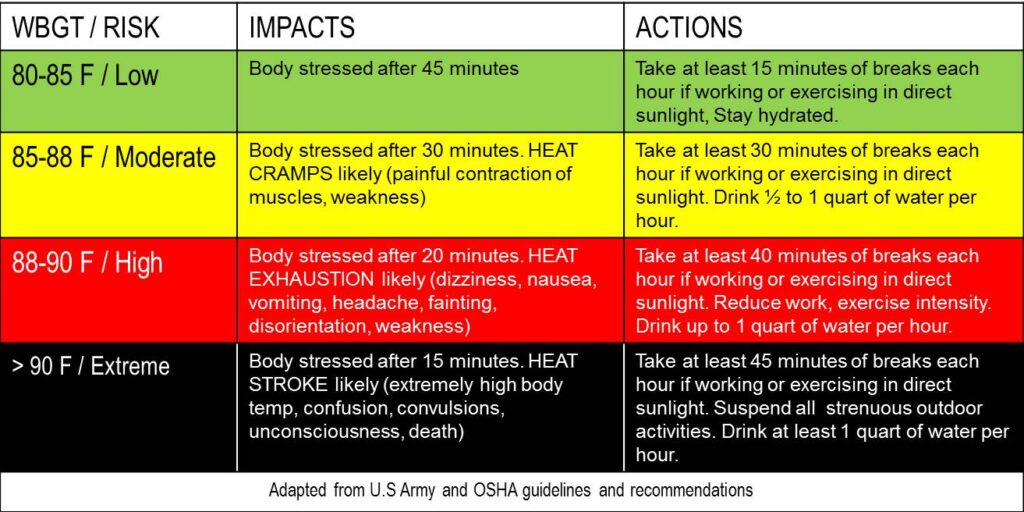
The National Institute for Occupational Safety and Health (NIOSH) has established guidelines based on the WBGT. The guidelines specify how much of each hour is worked (15 min./h. to 60 min./h.) and how hard the person works (100 to 500 Kcal/h).
A more straightforward method for measuring heat discomfort has been developed in Ontario, Canada, using the Humidex scale. This scale combines temperature and humidity to assess perceived temperature. A Humidex level above 30 may cause discomfort for healthy adults, while levels above 35 require a hot-weather action plan. When the Humidex reaches 40 or higher, it is advisable to avoid all unnecessary activities.
Visit the Occupational Health Clinics for Ontario Workers website for a helpful humidex calculator that provides basic safety measures to follow when the temperature rises.
If You or Someone Else Feels Sick From the Heat
Acting quickly is crucial if you or someone else experiences a heat-related illness. You want to lower the body temperature as soon as possible. Utilize as many of the methods listed below as possible.
- Move out of the heat to a cool area
- Place hands and forearms in cool water
- Place cool, wet towels or ice packs on the armpits and groin
- Spray with a garden hose or take a cool bath or shower
- Give cool liquids, but if the person is confused or unconscious, the drinking of liquids is not recommended
Try Our Free Heat Stroke Prevention Microlearning!
HEAT ILLNESS PREVENTION TRAINING: KEEP IT COOL.
Keep you and your family safe. Ensure everyone knows the signs and symptoms of heat exhaustion and heat stroke, as well as how to stay cool. It takes less than 30 minutes!
If you work outside in the heat, you may also be exposed to the cold in the winter. Check out “When Is It Too Cold to Work?”
For more information on heat exhaustion and heat stroke, please visit the websites listed below.
- Video: Overview of Heat-Related Illnesses – The New England Journal of Medicine
- Occupational Safety and Health Administration – Working in Outdoor and Indoor Heat Environments
- National Integrated Heat Health Information System
- Heat stress information from the CDC
- Protecting Workers from Heat Stress, Quick Card from OSHA
- Humidex Rating and Work from CCOHS
How do you stay cool when it’s hot? Let us know.

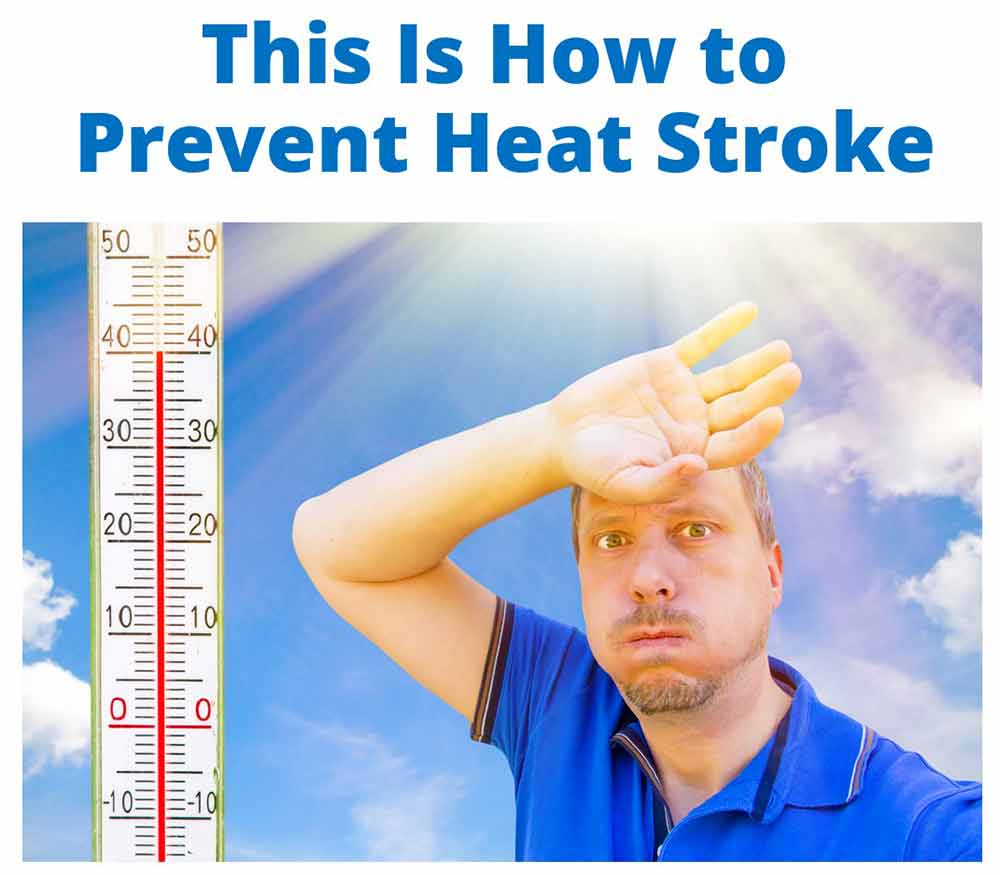

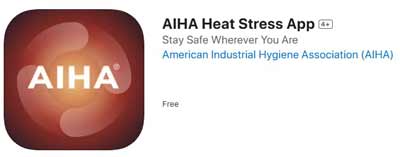
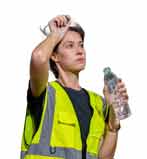
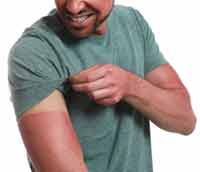
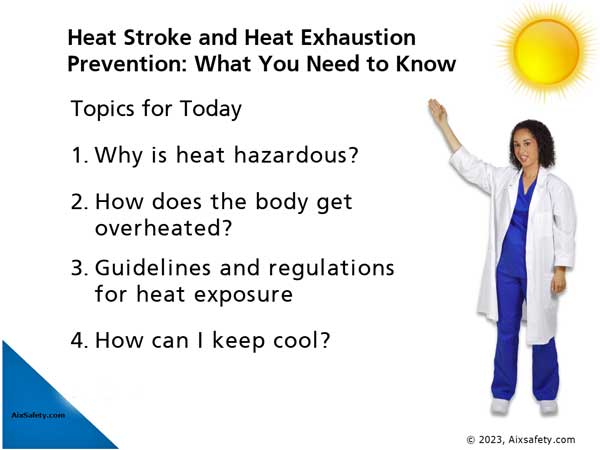
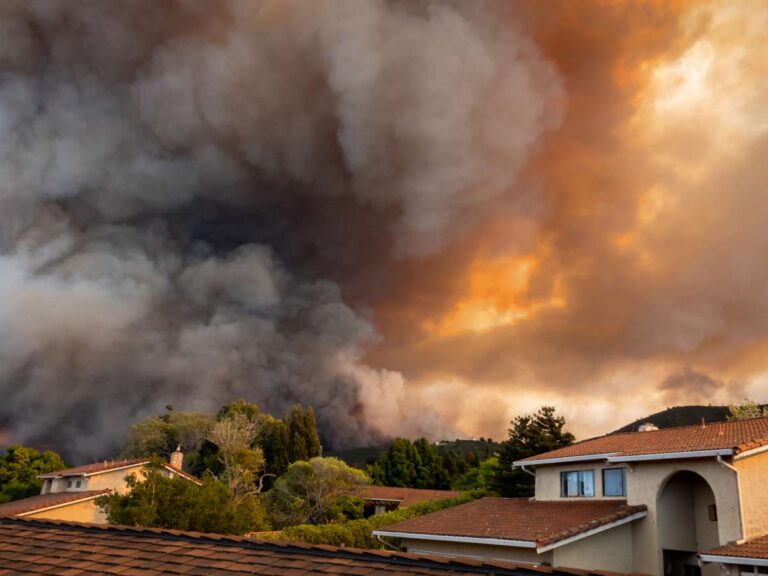
During summer, we are mostly allowed between 5-15 minutes break just to cool down. I now understand the rational behind.
It is very important course for every body to take care of our health at workplace exposed to the environments
Thank you, it was a very useful course.
It is very important to take care our health.
This video is good for people who works in roof, construction and landing.
It is very important to take care of our health in jobs exposed to the environment and in enclosed jobs such as factories, industries, homes, etc.
This is very important course for anybody in construction industry